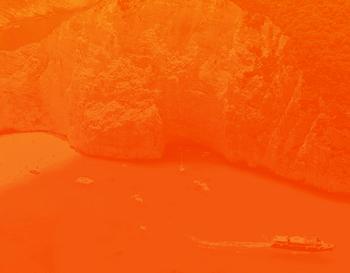
Although plenty of people enjoy the opportunity to head overseas on their holidays, there is also a large number of people who prefer to stay at home and embrace the beauty that can be found within the UK.
There are few areas of the country that can match the Lake District when it comes to scenic sights, so it seemed a good place to start a new series focused on road trips within the UK.
In reality there is so much to see and do within the Lake District that it’s hard to put it into a one route, but we’ve gone with a circular journey that starts and ends to the north of the Lakes in the popular tourist town of Keswick.
The small market town is a popular stopping point for visitors heading into the Lakes, particularly given that it sits off the A66 and can be easily accessed from the M6.
Home to the Theatre by the Lake and Cumberland Pencil Museum, Keswick is a town that is well worth exploring, with the streets around the Moot Hall – a Grade II listed building in the centre of town – being home to a myriad of small businesses that showcase everything the Lake District has to offer.

On leaving Keswick, you want to take the A591 to head towards Windermere, which head out of the town up the steep climb of Chestnut Hill – a route that has featured a number of times on cycling’s Tour of Britain.
Although you’ve only just hit the road, you might want to take a break as you reach the summit of the climb to pay a visit to the stone circle at Castlerigg.
With the mountains of Helvellyn and High Seat as the backdrop, Castlerigg is one of the most dramatically sited of Britain’s stone circles and dates back thousands of years. In fact, it might even be the oldest one in the country.
It is possible to park on the main road and then walk across to Castlerigg, or you can take a left hand turn down the single track Castle Lane just as the road starts to head down Nest Brow.
Alternatively, before even starting to head up Chestnut Hill you can take a detour up to Castlerigg by following the brown tourist signs and then cut across down Castle Lane to rejoin the A591.

Back on the main road, the route continues to wind its way through the countryside before arriving at Thirlmere; a large reservoir that sits at the base of Helvellyn.
Passing the King’s Head Inn, you’ll reach a parking area on the right in which you can take in views across the reservoir and also enjoy an ice cream break during the summer months.
The more adventure may prefer to park over the road, before embarking on a walk up Helvellyn itself; one of the highest peaks in the Lake District. As with any walk in the Lakes, preparation is key and it’s also vital to ensure you make the trip properly equipped for the conditions.
The road then continues to hug the edge of the reservoir as you head into the trees. More scenic views of the water follow as you journey along the section of road that was devastated by Storm Desmond back in December 2015.
You’ll be able to see where the main repair work was carried out as you head away from Thirlmere up Dunmail Raise, with your arrival at the summit providing stunning views down towards Grasmere below.

The small village is a good place in which to stop off for a quick break, with the opportunity to grab a quick coffee, take in the local shops or to visit Dove Cottage; the place where William Wordsworth created some of his most famous works.
Winding its way through the scenic countryside the A591 then takes you onwards to Ambleside, where’ll pass by the famous and much photographed Bridge House on arrival in the town.
Again it’s worth parking up if possible to take a quick stroll around before heading off into the countryside.
Leaving Ambleside, you need to follow signs for the A593 towards Hawkshead; travelling for little more than three miles before reaching a right hand turn towards The Langdales.
It’d worth noting that this is where the road gets more challenging, and should only be attempted by those who feel confident and who are at the wheel of a suitable vehicle.

If you’re in a motorhome for example, then Wrynose and Hardknott are best avoided, whilst it might also be worth missing them out if weather conditions are less favourable.
Instead, it’s possible to continue along the A593 through Coniston and down to Broughton-in-Furness before joining the A595 to follow the coast north round to Gosforth.
For those who elect to head for Wrynose, you need to follow the signs for the Wrynose Pass and Eskdale when the road splits shortly after a cattle grid.
Warning signs given an indication of what is to come as you head up the pass with stunning vistas on every side; crossing the summit and heading down in the valley below.
Continuing to follow signs for Eskdale, the road takes you across a small humpback bridge as it leads onto Hardknott, which is one of the steepest roads in the UK with a 1:3 gradient.

Descending down a series of hairpin bends, you’ll pass by an old Roman Fort as you drop into the valley below and close in on Eskdale.
Along the road you’ll find a series of pubs if you want to stop for a drink or a bite to eat, whilst there is café at Dalegarth Station where you could also take a trip on the 15" gauge Ravenglass & Eskdale Railway.
Follow the road down through Eskdale and continue to head towards Wasdale and Gosforth, which is where you join the A595 towards Workington and Whitehaven.
Arriving in Calder Bridge two miles down the road, a right hand turn takes you back into the countyside towards Ennerdale Bridge and then to the junction with the A5086, where you need to turn right towards Cockermouth.
Just under three miles later, a right hand turn takes you towards Loweswater, passing through the village and then coming to a tight right hand turn onto the B5289 towards Buttermere – around 5.5miles away from the main Cockermouth road.

Buttermere itself provides a good stopping point to grab refreshments or to stretch your legs before continuing to follow the B5289 away from the village and back towards Keswick across the Honister Pass.
The Honister Slate Mine is a popular attraction at the head of the pass before the road drops down through Borrowdale, Rosthwaite and Grange before running alongside Derwentwater and back down to Keswick and the end of the route.
Running to around 75 miles, the trip should take around 3hrs 30mins although Lake District traffic means it could take longer.
-
Edited by
Matt.Salisbury
2017-03-22 20:06:11


